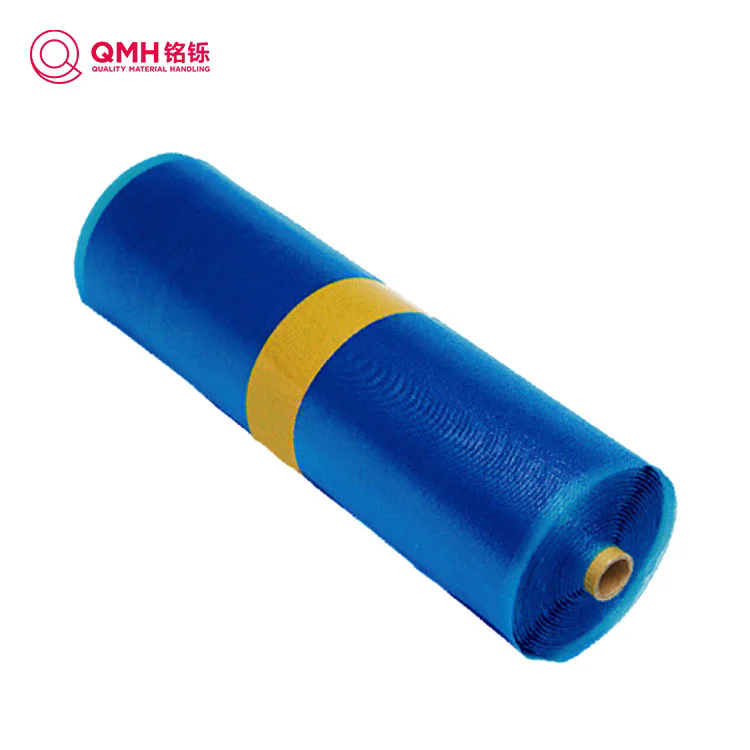Why Choose Conveyor Belt Cover Rubber for Long-Lasting Industrial Performance?
2025-09-23
In heavy industries such as mining, steel production, cement manufacturing, and logistics, conveyor belts serve as the backbone of material handling. Yet, the true strength and durability of a conveyor belt do not lie solely in its carcass but in its protective layer—the cover rubber. Conveyor belt cover rubber is the outer layer that shields the internal fabric or steel cords from damage, ensuring the belt maintains structural integrity under extreme operating conditions.
So, what makes conveyor belt cover rubber so critical? Its primary functions are:
-
Protection against wear and tear: Cover rubber resists abrasion from sharp, coarse, or heavy materials.
-
Resistance to heat, oil, and chemicals: Depending on the formulation, cover rubber ensures reliable performance even in high-temperature or corrosive environments.
-
Improved safety: Fire-resistant or flame-retardant rubber covers protect both workers and facilities in hazardous industries.
-
Extended belt lifespan: By preventing cracks, cuts, and early degradation, cover rubber extends overall belt service life.
Industrial operations often face unique challenges—whether it’s moving tons of limestone across kilometers of conveyor lines or handling bulk grain in food processing plants. Without the right cover rubber, the belt’s durability suffers, resulting in unexpected downtime and high replacement costs. This is why companies need to carefully evaluate the type of cover rubber that matches their operational demands.
How Does Conveyor Belt Cover Rubber Improve Industrial Efficiency?
Efficiency in modern industries is measured by uptime, energy use, safety compliance, and cost optimization. Conveyor belt cover rubber directly contributes to all these factors. But how exactly does it improve efficiency?
-
Abrasion Resistance for High-Impact Applications
In mining or quarrying, materials like granite, ore, and coal create constant friction against the belt surface. High-grade abrasion-resistant cover rubber reduces surface damage and slows the wear rate, minimizing the need for frequent replacements. -
Heat-Resistant Formulations
Cement plants, steel mills, and foundries transport materials at elevated temperatures. Specialized heat-resistant cover rubber prevents hardening, cracks, or loss of tensile strength even at continuous temperatures of up to 200°C. -
Oil- and Chemical-Resistant Properties
Conveyor systems handling oils, fats, or chemical materials require a cover rubber that resists swelling and surface breakdown. Oil-resistant formulations provide excellent performance in recycling, food processing, and fertilizer industries. -
Energy Efficiency Through Low Rolling Resistance
Certain premium cover rubber grades reduce rolling resistance, meaning less energy is consumed by the conveyor system. Over long operations, this significantly cuts electricity costs and carbon emissions. -
Safety through Fire Resistance
In underground mining or power plants, fire-resistant cover rubber minimizes the risk of ignition and flame spread, ensuring compliance with international safety standards.
The result of these combined benefits is a conveyor system that operates longer, safer, and more cost-effectively. Reduced downtime means uninterrupted production, and stronger resistance properties mean fewer replacements, directly enhancing profitability.
What Are the Key Specifications of Conveyor Belt Cover Rubber?
To understand why cover rubber is a vital investment, it’s important to look at the technical specifications that determine its performance. These parameters ensure that the product matches the right application.
Below is a professional summary of common Conveyor Belt Cover Rubber Parameters:
| Parameter | Description |
|---|---|
| Material | Natural rubber (NR), Styrene-Butadiene Rubber (SBR), Nitrile Rubber (NBR), EPDM |
| Hardness (Shore A) | 60 ± 5 (customizable based on application) |
| Tensile Strength | ≥ 15 MPa |
| Elongation at Break | ≥ 400% |
| Abrasion Loss | ≤ 120 mm³ (DIN 53516 standard) |
| Heat Resistance | Up to 200°C (depending on grade) |
| Oil Resistance | Excellent resistance to petroleum-based oils and fats |
| Flame Resistance | Complies with ISO 340 and MSHA standards |
| Thickness Range | 1.5 mm – 25 mm |
| Color Options | Black standard; customized colors available |
| Applications | Mining, steel, cement, food processing, logistics, recycling, agriculture |
Each parameter plays a role in defining the durability and suitability of the rubber cover. For instance, higher tensile strength ensures flexibility under heavy loads, while abrasion resistance prolongs lifespan in aggressive applications.
When industries select the right cover rubber based on these specifications, they minimize premature wear, reduce operational risks, and achieve long-term cost savings.
Why Invest in Quality Conveyor Belt Cover Rubber and How to Choose the Right Supplier?
Why Invest in Quality?
The cost of downtime in industrial operations can run into millions of dollars annually. A conveyor belt failure due to poor cover rubber quality not only halts production but also increases maintenance costs, labor time, and replacement expenses. High-quality cover rubber is an investment in reliability, minimizing risks of unplanned breakdowns and maximizing operational continuity.
Additionally, industries today face growing pressure to reduce environmental impact. Longer-lasting cover rubber reduces the frequency of replacements, lowering waste generation and conserving resources. Investing in durability is not just an operational choice but also a sustainable practice.
How to Choose the Right Supplier?
When selecting a conveyor belt cover rubber supplier, industries should evaluate:
-
Technical expertise: A supplier must provide tailored solutions for heat, oil, abrasion, or flame resistance.
-
Compliance with standards: Certifications such as ISO, DIN, and MSHA indicate high-quality, globally accepted performance.
-
Customization options: Ability to produce specific hardness, thickness, or chemical resistance grades.
-
After-sales service: Technical guidance, maintenance advice, and quick supply capability.
A supplier that combines technical excellence with customer support ensures long-term partnerships and reduced operational risks.
FAQs about Conveyor Belt Cover Rubber
Q1: What is the lifespan of conveyor belt cover rubber in industrial use?
The lifespan depends on operating conditions, material type, and maintenance practices. In standard environments with proper care, cover rubber can last between 3 to 7 years. In harsh applications like mining or cement, specialized abrasion- or heat-resistant grades may be required to achieve optimal durability.
Q2: How do I know which type of cover rubber is suitable for my application?
The selection depends on material characteristics, temperature range, and environmental exposure. For high-impact loads, choose abrasion-resistant rubber. For cement or steel industries, heat-resistant grades are ideal. If oils or chemicals are present, oil- and chemical-resistant formulations are necessary. Consulting with a professional supplier ensures accurate material selection.
Conveyor belt cover rubber is not just a surface layer; it is the protective shield that ensures conveyor belts withstand abrasion, heat, oil, chemicals, and fire risks. By improving efficiency, reducing downtime, and extending operational life, it plays a critical role in industrial productivity.
For companies seeking reliable, high-performance cover rubber solutions, QMH delivers products that meet international standards while offering customized options to match specific industry requirements. With advanced material engineering and a customer-first approach, QMH ensures both durability and efficiency in every application.
To explore tailored conveyor belt cover rubber solutions for your business, contact us and discover how QMH can help strengthen your operations with trusted industrial rubber expertise.



